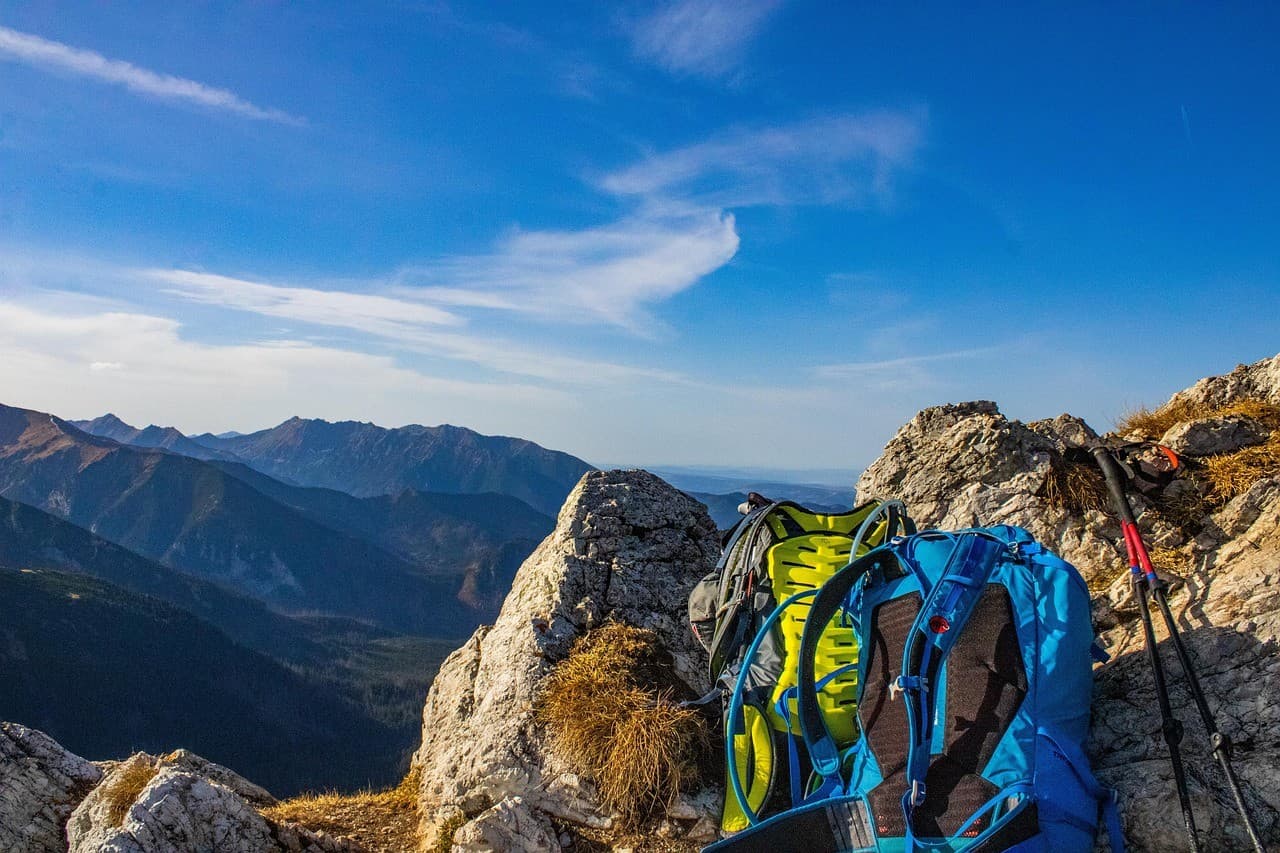A family trip to the mountains – what to pack in your backpack for a one-day hike?

Packing Rules for a Family Mountain Hike
Packing a backpack for a one-day mountain hike is all about balance—you want to be ready for various situations without carrying unnecessary weight. Here are a few key principles to keep in mind, especially when hiking with children:
Pack Light, But Smart
Every item you put in the backpack should serve a clear purpose. Instead of bringing “everything just in case,” focus on practical and multi-functional items. A lighter backpack means more comfort for both adults and kids—less fatigue, more joy from the hike.
Weight Distribution Matters
Heavier items (like water bottles, power banks, food) should be placed close to your back and in the center of the backpack. This helps keep the center of gravity near your body, improving balance and reducing back strain. Lighter items like rain jackets or tissues can go on top or in outer compartments.
Kids Can Carry Small Backpacks Too
If your children are school-aged, consider giving them small backpacks with light gear—such as a water bottle, a lightweight sweatshirt, a healthy snack, or their own hat. It helps lighten the load for adults and teaches kids responsibility while involving them in the trip preparations.
Essential Items for the Backpack
A well-packed backpack is key to a successful outing. To make sure you don’t forget anything important—or take too much—use this practical checklist divided into categories. It will help you quickly review what to bring on a one-day family hike.
Safety
First aid kit with essentials: plasters, bandage, pain relievers, insect bite remedy, and something for minor scrapes.
Emergency blanket – lightweight and compact, but can be life-saving in emergencies.
Flashlight or headlamp – especially useful if you're returning late or it gets dark on the trail.
Whistle – a simple way to signal for attention, especially if a child wanders off.
Power bank – to charge your phone or other devices.
Clothing & Protection
Rain or windproof jacket – mountain weather changes quickly, so be ready for rain and wind.
Sun hat or warm hat depending on conditions.
Gloves, especially during cooler seasons.
Spare socks – kids love puddles, and wet socks can ruin the mood fast. 😉
Sunscreen – essential even in the mountains, where UV radiation is stronger.
Food & Drink
Water – larger bottles for adults, smaller bottles for kids.
Energy snacks – bars, nuts, fruits, sandwiches for an energy boost along the way.
“Reward” treats for kids – like a small chocolate or favorite candy for motivation after reaching a goal.
Other Essentials
Paper map or offline map app (e.g., a hiking map) – always good to have a backup navigation option.
Tissues or wet wipes – for hygiene and comfort.
Trash bag – always take your rubbish with you.
Small travel towel – useful after washing hands or during breaks.
ID and some cash – in case of emergency or where there’s no mobile signal.
What to Leave Behind
When packing for a family mountain hike, it’s easy to overdo it and bring items that only add weight and serve little purpose. Here’s what to avoid:
Heavy Books and Toys
Though kids may want their favorite toy, heavy books or unnecessary toys quickly become burdensome. Choose light and compact entertainment or save playtime for the breaks.
Too Much Food
One of the most common mistakes parents make is packing too much “just in case.” Extra snacks increase weight and may go uneaten. Plan reasonable portions suited to the hike’s duration and intensity.
Excess Clothing "Just in Case"
While weather in the mountains can be unpredictable, there’s no need to pack a dozen clothing layers. Choose practical and lightweight options that are easy to add or remove.
Electronics (Except for Phones & Navigation)
Tablets, handheld game consoles, or other gadgets are unnecessary weight and rarely useful on the trail. A phone and navigation device are enough for safety and communication.
Extra Tips
Planning a family mountain outing involves more than just packing well—it also means following a few practical tips to ensure the hike is safe and enjoyable for everyone.
Check the Weather Forecast Before Heading Out
Mountain weather can change rapidly, so always review the latest forecast right before the hike. This helps you avoid unpleasant surprises and dress appropriately.
Adjust the Route and Pace to the Youngest Members
Children walk at a different pace—make sure the trail suits their age and stamina. A route that’s too demanding can lead to quick burnout. Opt for paths with rest stops and attractions along the way.
Take Breaks and Watch the Kids
A tired child is often a cranky one. Regular breaks for water, snacks, and rest help maintain good moods and energy. Keep an eye on the kids—if they seem too tired, slow down or extend your break.
Involve Kids in the Prep and the Trip Itself
Let kids choose their snacks, carry a small bag, or help with planning—it boosts their sense of responsibility and makes them feel like a vital part of the adventure. Plus, involvement helps them better cope with the effort and creates positive memories.
See also:

